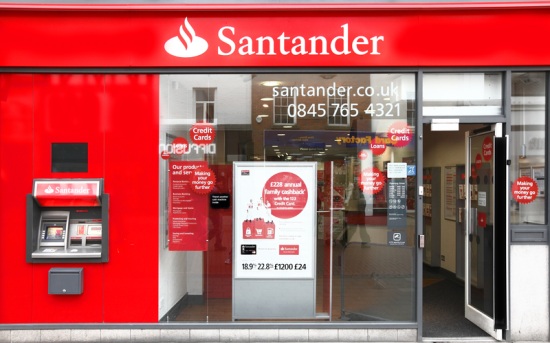In the past few years, it is fair to say that major high street banking chains have somewhat fallen out of favour with the general public. With controversies over annual bonuses, falling interest rates for savers and, of course, the issue of the country’s current financial status, many consumers are turning away from major names such as Santander and the Royal Bank of Scotland in favour of smaller, more local brands.

Research by consumer group Which?, in fact, indicates that small financial institutions are leagues ahead of the major players when it comes to customer satisfaction. Not one of the country’s largest high street banking chains managed to score above average in the survey, even though combined they offer more than 80 per cent of the current accounts on the market at the moment.
Santander found itself at the bottom of the list, scoring just 46 per cent in customer satisfaction ratings, with Halifax hot on its heels with only 48 per cent. With the average customer satisfaction rating coming in at 62 per cent, both of these popular chains clearly have a long way to go in terms of providing top service to their customers.
Additionally, despite the launch of its customer charter two years ago, which it claimed would make it “Britain’s Most Helpful Bank”, the Royal Bank of Scotland failed to live up to expectations, coming 27th out of 30 in the banking chains included in the study. The chain, which also owns the NatWest brand, has failed to perform well in Which? studies for three years now, and this year was no exception with only 49 per cent of customers claiming to be happy with their accounts.
Other names found at the bottom of the table included Lloyds, Bank of Scotland and HSBC.
Which? executive director Richard Lloyd, believes that customers should be rewarded for their loyalty to banking chains and that the major names need to up their game in terms of customer service.
He says; “Consumers are constantly being let down when it comes to customer service. This is not good enough.
“We want to see fundamental changes in the culture of banking and a return to banking for customers, not bankers.”
Fortunately, some financial institutions did meet, and exceed, their targets for customer satisfaction. First Direct topped the list, with 86 per cent of its customers claiming to be perfectly satisfied by their accounts and liaisons with customer services staff within the commercial properties it operates.
Smaller chains, on the whole, outperformed their larger competitors admirably, with lesser known names such as the Co-Operative Bank, Coventry Building Society and Marks and Spencer all appearing in the top half of the table.
Mr Lloyd continues; “Our survey shows that those banks that go the extra mile to keep their customers happy are rated far higher than banks who may offer slightly better products or interest rates.
“All banks need to start putting customers first.”
The results of the study were based on a combination of surveys, all of which were conducted by the consumer group in the last twelve months. Participants were asked to rate their satisfaction with their current account, savings account, credit card and mortgage provider. Also, they were asked whether they would recommend their bank to a friend.
Furthermore, participants were asked to rate their bank in terms of customer service experience, problem solving, efficiency of staff in their local commercial property and how well their bank kept them up to date with the best deals on the market and any charges they were likely to incur.
Have you had any good or bad experiences with your bank in the past twelve months? Do you think Which?’s study is likely to help customers get a better service from their bank, and would you be tempted to switch to a smaller chain that performs better in terms of customer satisfaction as a result of this survey?
Previous Post
GVA to Market Zenith Properties